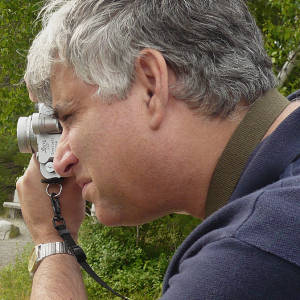A Bird's Eye View. Leica-Lumix Macro-Elmarit 45mm
Many years ago now, I was commissioned to make a square dining table for a client. We chose a very traditional design using cherry and maple in combination. I will confess that, even back then, I was drawing on the Cape Dutch tradition of juxtaposing dark and light woods, but with a New England twist. The square top of this table was of very fancy curly cherry, surrounded on all four sides by a wide border of Birdseye Maple. The bird’s eyes – so called since they look that way - are formed by an anomalous growth within the tree. The “eyes” are the end grain of shoots that grew at right angles to the development of the tree’s main limbs. It doesn’t happen often, and seems to occur mostly in hard sugar maple, Acer saccharum. It is not clear what causes this phenomenon, but it may be that the tree grew in less-than-ideal conditions, and was stunted and stressed abnormally in its development. Birdseye, a special treasure from Nature, is akin to the botrytis fungus which grows on grapes under certain climate conditions, yielding a highly-prized dessert wine.
Once the client and I had agreed on a design, I set off to the lumber yard to find suitable material. There was a generous selection of the maple from which to choose. I came away with more than enough to make the table. There was one board which stuck out from the others: a much greater profusion of the eyes, covering the entire surface of the board, much more densely than the others. It would not have matched well in the table top, so I set it aside for a special project... It seems, twenty five years later, that that project has presented itself: I am going to make a Roubo-style frame saw, as described here. There is a long tradition of fine saws having beautiful, ergonomic handles, designed to make easier the hard work of sawing, the confluence of form and function.
Today’s Blip is a close-up of a few square inches of this exceptional board. The lens reveals the undulations in the wood's surface against the scarring caused by the machine which planed it at the sawmill. Working birdseye is difficult; it requires a razor-sharp plane blade, and the use of the cabinetmaker’s scraper plane, to deal with the end grain of the eyes, and the twisted, curly grain of the maple fibers.

Comments
Sign in or get an account to comment.


